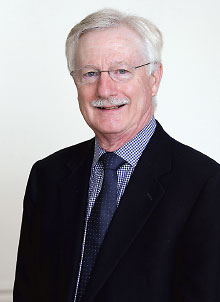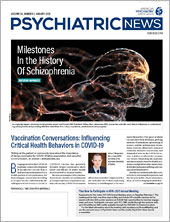On December 31, 1970, the United States Congress passed the Comprehensive Alcohol Abuse and Alcoholism Prevention, Treatment, and Rehabilitation Act. This legislation created the National Institute on Alcohol Abuse and Alcoholism (NIAAA)—a member of the National Institutes of Health family, focused on the diagnosis, treatment, and prevention of alcohol use disorder (AUD) and alcohol-related health problems. NIAAA marked its 50th anniversary in late 2020 with a two-day virtual symposium that highlighted past discoveries and future directions in alcohol research.
“Looking back over the past five decades, I am proud of the tremendous progress we have made in this field,” said NIAAA Director George Koob, Ph.D., who has overseen seven of those 50 years. “We have made great strides in reducing underage drinking and drinking during pregnancy, improved our epidemiology to track drinking trends, made genetic discoveries that have implications for precision medicine, identified effective treatments, and uncovered how alcohol impacts stress biology, which has implications for AUD risk and recovery.”
The topic of alcohol and stress holds particular importance for Koob, who during his tenure leading NIAAA has been advocating the importance of understanding the “dark side” of drinking. Though many people see alcohol as a means to relax or enjoy a “buzz,” others are drawn to alcohol because it temporarily reduces feelings of discomfort. But with repeated misuse, alcohol has a perverse ability to rewire the brain’s reward and stress circuits; drinking to feel better becomes drinking to not feel worse. When someone with AUD stops drinking, heightened activity in stress circuits can lead to potentially debilitating withdrawal symptoms, which in turn drive more alcohol misuse.
Rajita Sinha, Ph.D., the Foundations Fund Professor of Psychiatry and director of the Interdisciplinary Stress Center at Yale University, presented data at the NIAAA symposium on the relationship between stress and AUD. Her research has found that people with AUD report higher levels of baseline stress and alcohol craving than both light drinkers and heavy drinkers without AUD. Her research has also revealed that while the stress levels of all drinkers rise when viewing negative images, people with AUD also have a heightened stress response to images of alcohol compared with light drinkers or heavy drinkers without AUD.
Sinha’s group recently completed a clinical study involving prazosin—a blood pressure drug that is also used to treat posttraumatic stress disorder. As reported in the American Journal of Psychiatry, prazosin significantly reduced drinking in people with AUD and severe withdrawal symptoms. What’s more, they found study participants who took prazosin experienced significant reductions in alcohol craving, anxiety, and mood symptoms over the course of the trial.
The findings suggest “that prazosin’s benefits may be mediated by its effects on the high craving, negative mood, and anxiety that are clinically observed in those with greater alcohol withdrawal symptom severity,” Sinha and colleagues wrote.
If prazosin becomes a viable AUD therapy, it will add another victory for NIAAA’s pharmacology efforts. As Barbara Mason, Ph.D., the director of the Pearson Center for Alcoholism and Addiction Research and NIAAA Alcohol Research Center at Scripps Research in San Diego noted in her presentation, big pharma has generally ignored AUD research. Therefore, NIAAA grants and clinical programs have been vital for AUD drug development. Successes include the repurposing of the opioid therapy naltrexone to also treat AUD in 1995, gaining FDA approval for acamprosate to treat AUD in 2004, and gaining European approval for the medication nalmefene in 2013.
Mason, who was the lead U.S. investigator guiding acamprosate’s approval, noted that current AUD medications either reduce the psychological pleasure or biological dependence of drinking. “Since we now know that many people drink as a coping mechanism for stress, we need to consider drugs that target the negative reinforcement,” she said.
Her team is conducting AUD clinical studies with several medications currently used for other psychiatric conditions, including the anticonvulsant gabapentin. A phase 3 study of gabapentin in 2014 did not suggest it was more effective than placebo at reducing drinking, but a recent study suggests that like prazosin, gabapentin may work in AUD patients with a history of severe withdrawal symptoms.
New medications to treat AUD could be valuable to the field, but they can only work if patients take them, Koob noted. “Closing the treatment gap remains a big challenge. Less than 10% of people with AUD receive any form of treatment, and fewer still receive an FDA-approved medication. A large problem is that many physicians still do not conduct routine alcohol screenings and are not aware of evidence-based treatments for AUD,” he told Psychiatric News in a separate interview.
That’s why developing online resources for both professionals and the public has been one of Koob’s big initiatives at NIAAA. The institute is currently developing a Clinician’s Core Resource, which will house information and guides related to the diagnosis and treatment of AUD or other alcohol disorders. “Whether you are a pharmacist, a primary care physician, or a board-certified addiction psychiatrist, you can easily find everything you should know at your level,” he said.
NIAAA has also created online tools for the public: “Rethinking Drinking,” which enables people to evaluate the health impacts of their drinking habits, and the “Alcohol Treatment Navigator,” which describes treatment options for AUD and features a search tool for locating nearby programs according to ZIP code.
“Now more than ever, we need to raise awareness about the risks of alcohol consumption,” Koob said. “There are multiple ways that alcohol and COVID-19 interact, and they all have public health implications.”
He expressed concerns over the role that alcohol in social settings can have on the spread of the virus, as well as how the stress of the pandemic might contribute to increased drinking.
“[A]s people drink in social settings, they start to talk a little louder and spray more droplets, so it is a definite contributor to the spread of the virus.” At the same time, the increased number of people drinking alone due to social isolation requirements is troubling (see
Psychiatric News). Koob noted studies showing increases in alcohol purchases and consumption during the pandemic, and this drinking can exacerbate symptoms of stress, anxiety, and depression. Social isolation is especially problematic for people with a history of AUD since social support is a key factor to encourage abstinence. Koob said that he worries that incidents of relapse will rise during this time.
Additionally, people with AUD are at greater risk of severe reactions to COVID-19, Koob noted. Previous research has found that people who misuse alcohol have higher risks of acute respiratory distress syndrome, in which fluid builds up in the lungs and stifles breathing. “Alcohol impacts lung function, and people who drink and are infected could be at higher risk of developing these cytokine surges that lead to severe illness.”
The emergence of a national pandemic was not how Koob envisioned NIAAA would round out its first 50 years, but he is still optimistic that the institute will continue to provide meaningful advances over the next 50. “There are so many important questions yet to answer. I’m eager to see where the science takes us next.” ■


